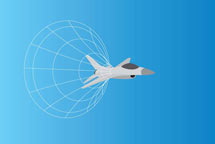

Tuesday - October 6, 2009
SLAC Today is
available online at:
http://today.slac.stanford.edu
In this issue:
Nobel Prize in Physics Awarded
Symmetry Explains It in 60 Seconds: Cherenkov Light
Safety at a Glance: The ES&H Dashboard
 |
 |
|
Tuesday - October 6, 2009 |
Nobel Prize in Physics AwardedThe Royal Swedish Academy of Sciences has decided to award the Nobel Prize in Physics for 2009 with one half of the $1.4 million to: Charles Kao of Standard Telecommunication Laboratories, Harlow, UK, and Chinese University of Hong Kong, "for groundbreaking achievements concerning the transmission of light in fibers for optical communication" and the other half jointly to: Willard Boyle and George Smith of Bell Laboratories, Murray Hill, New Jersey, "for the invention of an imaging semiconductor circuit – the CCD sensor." See also Optics Pioneers Scoop Nobel Prize from Physicsworld and 'Masters of Light' Win Nobel Prize from Physorg. Symmetry Explains It in 60 Seconds: Cherenkov Light
(Image: Symmetry Magazine.)
Cherenkov light appears when a charged particle travels through matter faster than light can. This effect is the optical equivalent of a sonic boom, which occurs, for example, when a jet travels faster than the speed of sound. But how can a particle go faster than light without violating the laws of physics? The speed of light in a vacuum is the ultimate speed limit: 300,000,000 meters per second. It's thought that nothing can travel faster. However, light slows down when it goes through water, glass, and other transparent materials—in some cases by more than 25 percent. Hence a particle can slip through material faster than light does, while at the same time staying below the speed of light in a vacuum. When this happens, a particle emits bluish Cherenkov light, which spreads out behind it in a hollow cone that is shaped like the cone of a sonic boom. This light gives the water surrounding a nuclear reactor core its distinctive blue glow. Scientists build telescopes to gather Cherenkov light emitted by cosmic-ray and gamma-ray showers in the Earth's atmosphere. Neutrino physicists embed hundreds of light-sensitive detectors in large volumes of water and ice to record Cherenkov light from muons and electrons, which emerge when neutrinos crash into atoms. The Cherenkov light recorded with such devices helps scientists identify particles and determine their energies. Safety at a Glance:
|
Events
Access (see all)
Announcements
|
|
| | ||
|
|
||
 <%
Response.AddHeader "Last-modified", getArticleDate()
'Response.AddHeader "Last-modified","Mon, 01 Sep 1997 01:03:33 GMT"
'Monday, December 06, 2010
%>
<%
Response.AddHeader "Last-modified", getArticleDate()
'Response.AddHeader "Last-modified","Mon, 01 Sep 1997 01:03:33 GMT"
'Monday, December 06, 2010
%>View online at http://today.slac.stanford.edu/. |
||